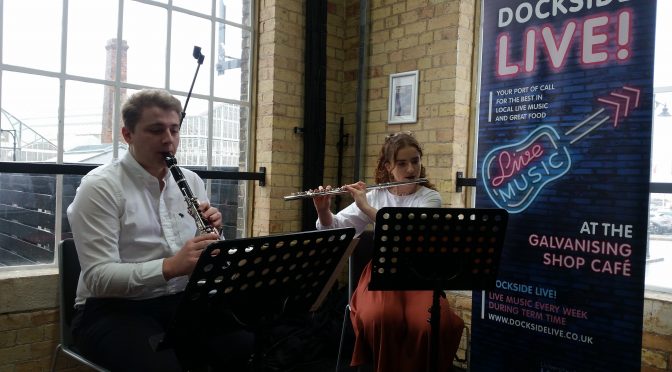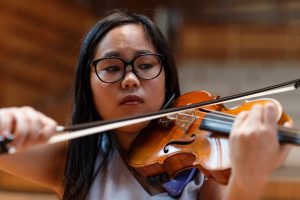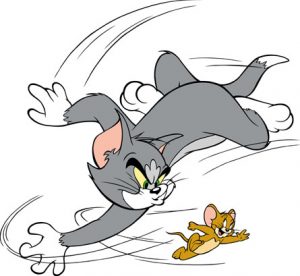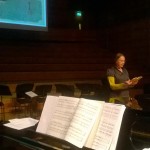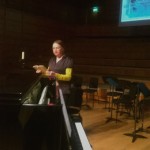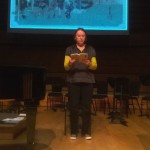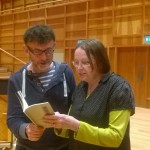Congratulations to University Music Performance Scholars Tom Wust and Meg Daniel, who performed trio music at the Galvanising Cafe last Friday as part of Dockside Live, a series of lunchtime concerts each Friday during term-time run by the University’s Arts and Culture team.

A home-turf event for fourth-year clarinettist Tom, who reads Business Studies on the Medway campus, the concert also featured second-year flautist and Law student, Meg, in a colourful programme with Your Loyal Correspondent joining them on the piano in the Petit Suite by Debussy, the slow movement of Piano Concerto K467 by Mozart, and closing with three cheeky waltzes by Shostakovich.
 The Galvanising Cafe is a great, informal performance space, and the opportunity to avail oneself of coffee and pre-concert toasted sandwiches and fries is never one to miss…
The Galvanising Cafe is a great, informal performance space, and the opportunity to avail oneself of coffee and pre-concert toasted sandwiches and fries is never one to miss…
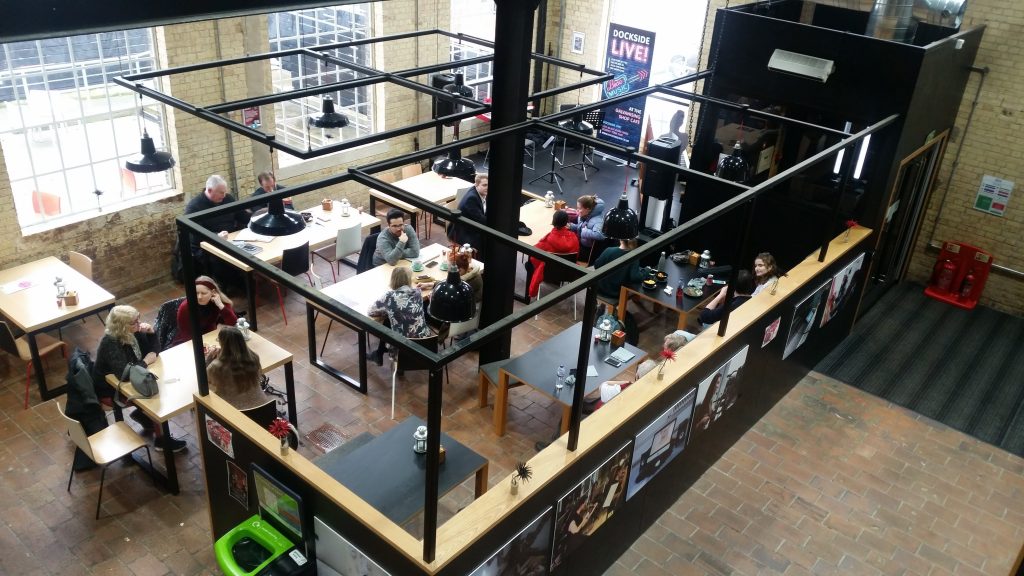
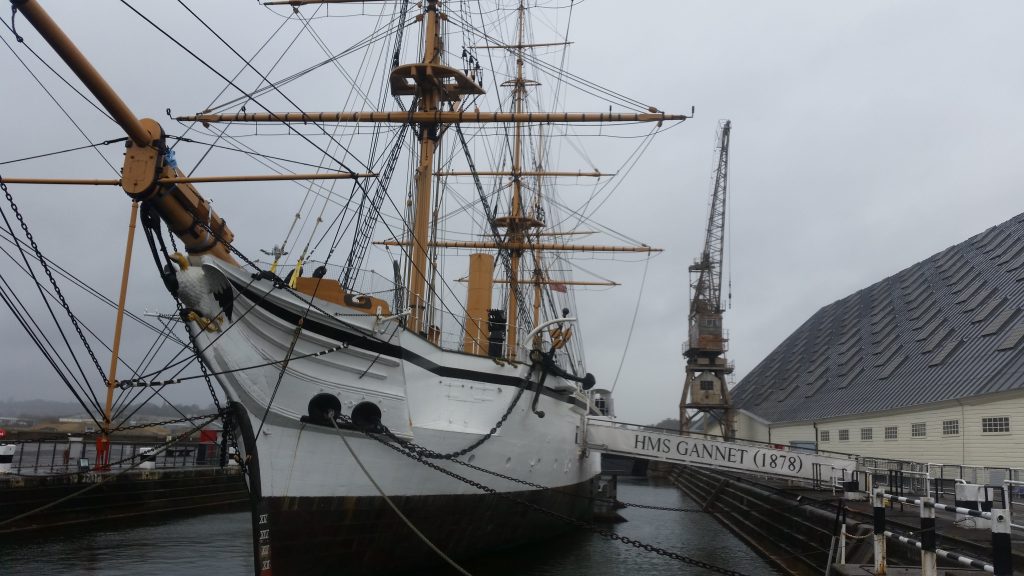 Following the concert, we grabbed some of the students in the audience who had travelled over from Canterbury to visit the HMS Gannet, and then a crucial post-performance analysis over a meal at Nando’s with the Medway Music Engagement Officer, Chris Barrett (pictured, right).
Following the concert, we grabbed some of the students in the audience who had travelled over from Canterbury to visit the HMS Gannet, and then a crucial post-performance analysis over a meal at Nando’s with the Medway Music Engagement Officer, Chris Barrett (pictured, right).
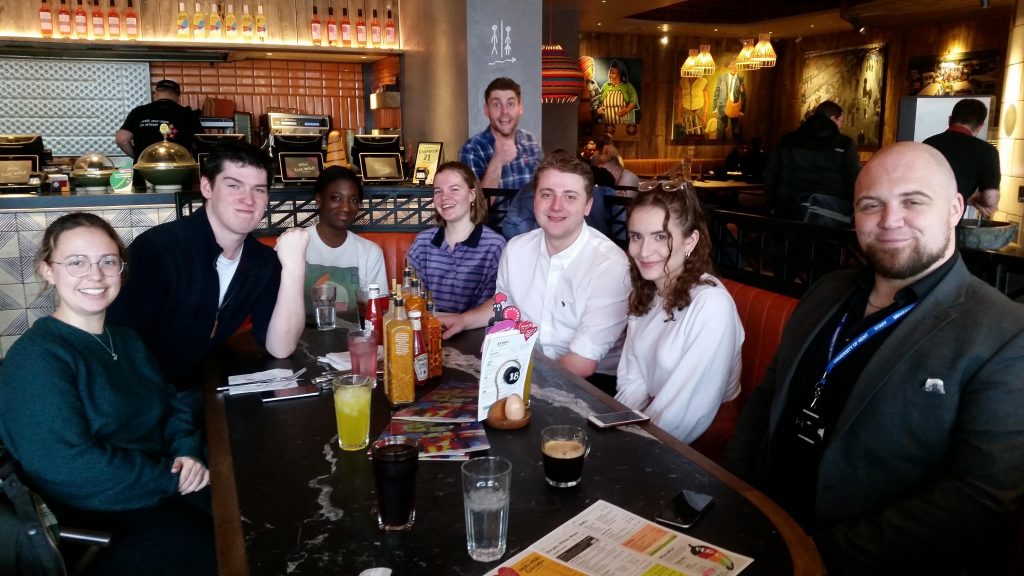 Our thanks to Chris for the opportunity to participate in the Dockside Live series – we look forward to coming back…
Our thanks to Chris for the opportunity to participate in the Dockside Live series – we look forward to coming back…

